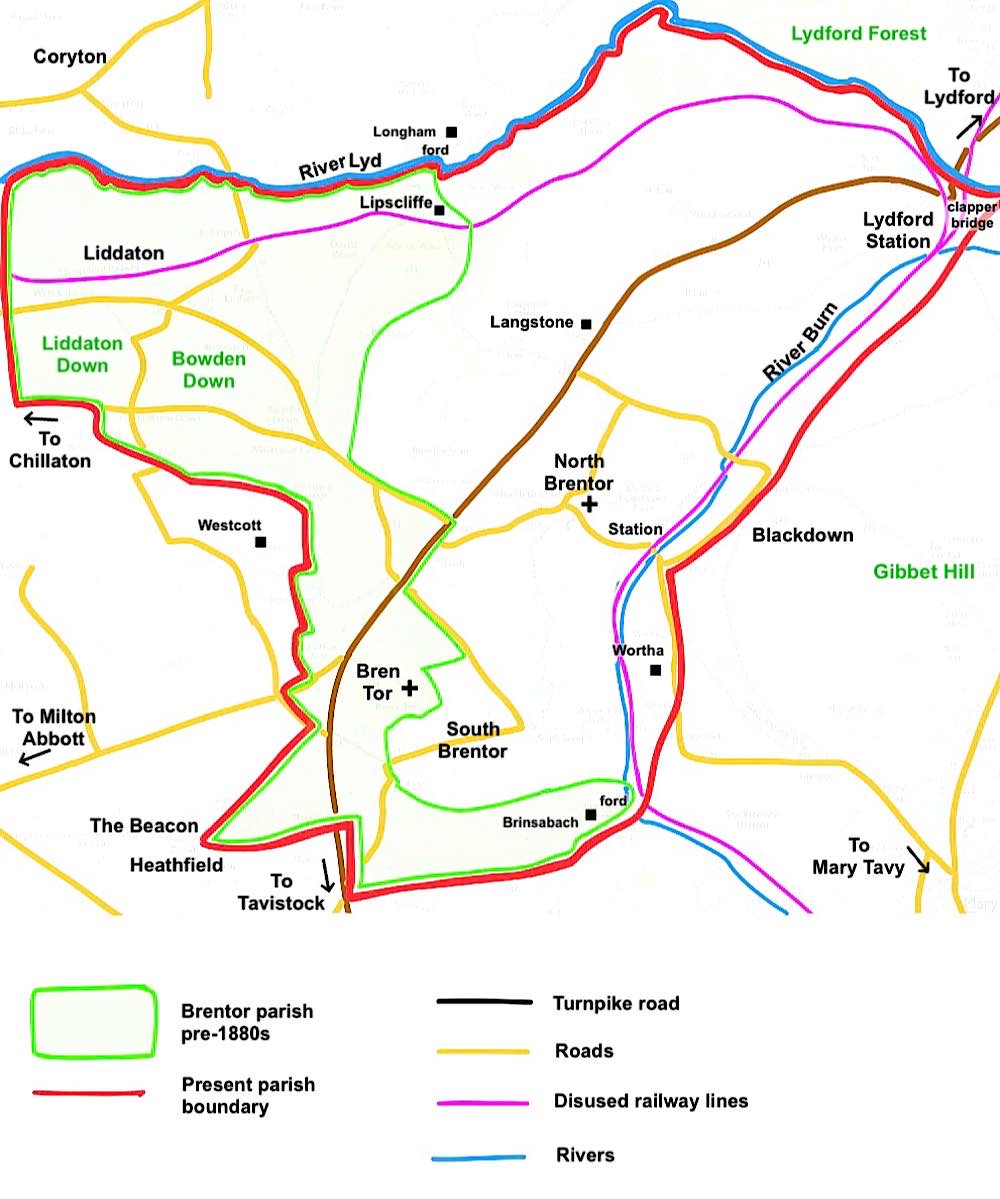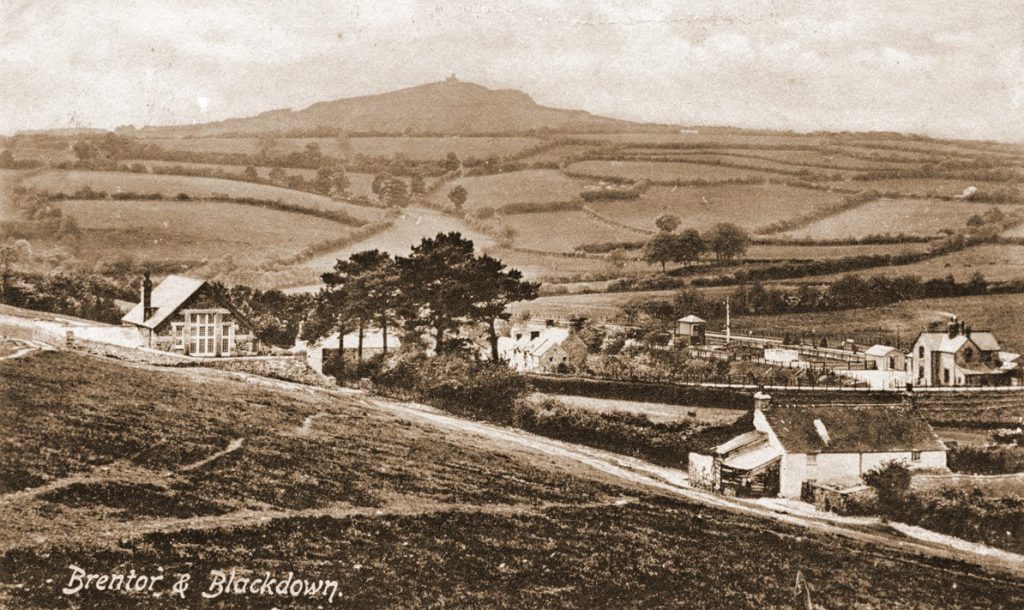The Parish of Brentor, Devon
Please note that this page is being updated and redesigned
Location & setting
The parish of Brentor is situated in West Devon, about 4 miles (6km) north of the market town of Tavistock on the north west edge of the Dartmoor National Park. To the east is the River Burn (a tributary of the River Tavy), and Gibbet Hill backed by an impressive range of granite Dartmoor Tors. To the north and west is the River Lyd (a tributary of the River Tamar) and an 'area of outstanding natural beauty' in the Lyd Valley.
The Tor itself is a dramatic conical volcanic plug 1100 feet (335m) high. In contrast to the neighbouring granite tors of Dartmoor, Brent Tor was formed from pillow lava extruded under a shallow sea some 350 million years ago. The result is an 'excellent and rare example of ...submarine volcanic deposits' and has been registered as a site of special scientific interest (SSSI).
Blocks of lava and pumice have been incorporated into many of the stone walls and houses in the parish.
The prominent and rugged nature of Brent Tor has made it a focus for human activity for more than 2,000 years. Notable earthworks around the Tor include late iron age ramparts dating from 500BC, and later enclosed platforms probably established in the Dark Ages or the medieval period. These earthworks constitute a scheduled monument.
The most striking human feature is the 12th century church of St Michael de Rupe, which is both the smallest and highest complete parish church in England. This early Norman chantry was built in 1130 by Robert Giffard on the summit of Brent Tor, giving it a unique and dramatic silhouette. The church is only 4.6 metres (15 feet) wide and 11.3 metres (37 feet) long, with a 12.2 metre (40 foot) tower housing three bells. St Michael's remains the official Brentor parish church despite the later construction of Christchurch in North Brentor
The parish
The current parish has an area of 13.46 sq km and the population was estimated to be 385 in 2020, in 220 households centred on the village of North Brentor.
Smaller numbers are distributed in the surrounding hamlets:
To the south - South Brentor, close to Brent Tor.
To the west - Liddaton, in the Lyd valley.
To the north - Lydford Station (Lydford Junction).
There are also numerous outlying houses and farms. With the exception of Liddaton all the settlements are within the Dartmoor National Park.
The agricultural settlements were connected by a network of rugged routes for pack horses until the late eighteenth century, when the demands of the industrial revolution triggered extensive enclosures of common land and demands for raw materials. Mining for manganese, ochre and copper became important sources of wealth and employment in the nineteenth century, with at least five mines active in the parish. These developments resulted in the construction of a turnpike toll road past Brent Tor in the late eighteenth century and of two railway lines along the Burn valley in the nineteenth century.
Boundary changes
The resulting changes in the local economy affected the livelihoods and distribution of the population and triggered major alterations to the parish boundaries and to the main population centre at North Brentor.
Prior to the boundary changes of the 1880s, Brentor parish was a relatively thin sliver of land encompassing Brent Tor in the south and reaching up to the River Lyd in the north. Its only settlement was Liddaton, since both North & South Brentor and Lydford Station lay in a detached portion of the neighbouring Lamerton parish.
White's Directory of 1850 describes Brentor as 'containing 169 souls, and 2180 acres of land, rising in bold hills on the western confines of Dartmoor'. The parish church was St Michael de Rupe (at the summit of Brent Tor).
The boundary changes of the 1880s (ecclesiastical boundary change 1883, civil boundary transfer 1885) transferred the detached portion of Lamerton to the Parish of Brentor, more than doubling its size and population. Further boundary changes in 1987 saw the area east of the 'White Lady Waterfall' on the River Lyd transferred to Lydford parish and Blackdown, up to the road, transferred to Brentor from Mary Tavy parish.
North Brentor
The historic core of North Brentor (within the circle on Map 2 below) was built around a small cluster of farms, possibly dating from the medieval period. The village expanded considerably during the 19th Century.
The centre of North Brentor was designated a Conservation Area in August 1993.
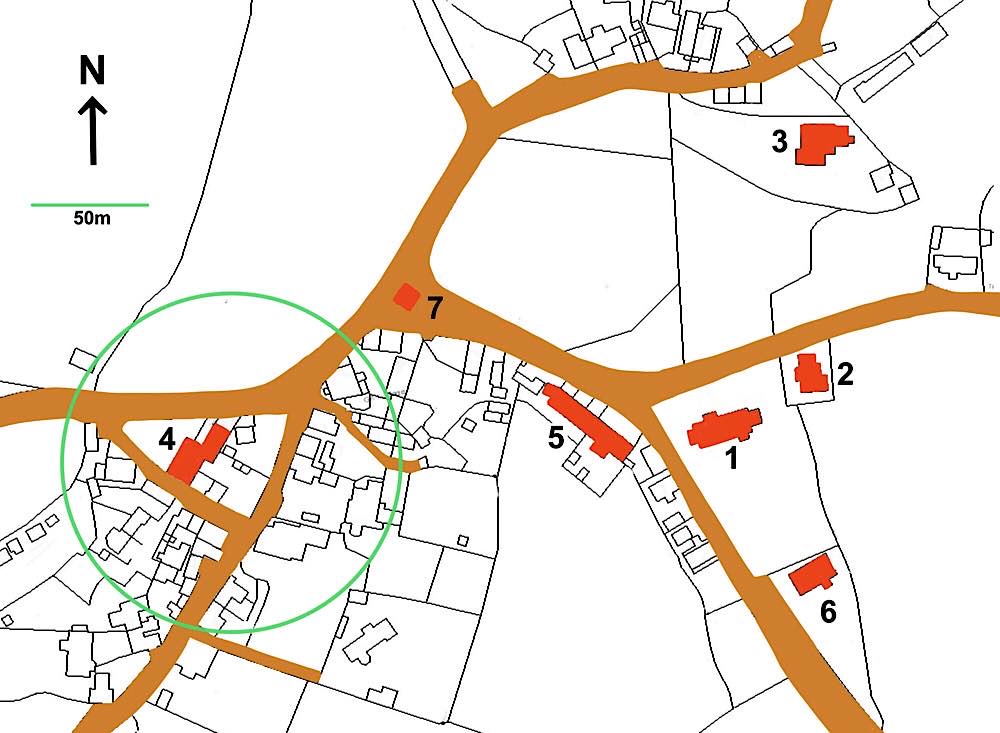
North Brentor map, showing key buildings
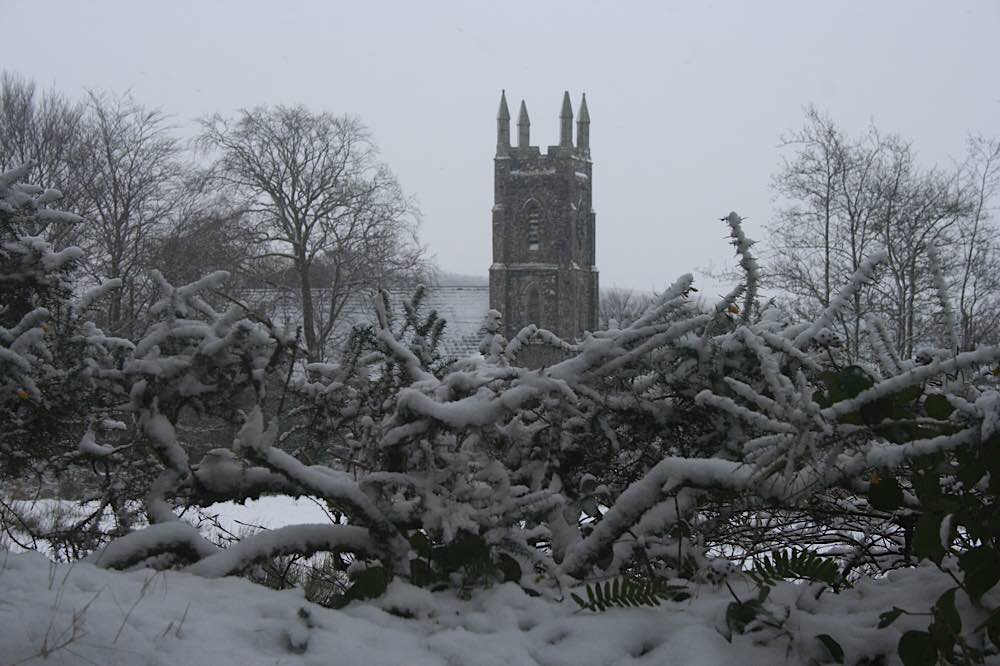
Christ Church, Brentor, Devon
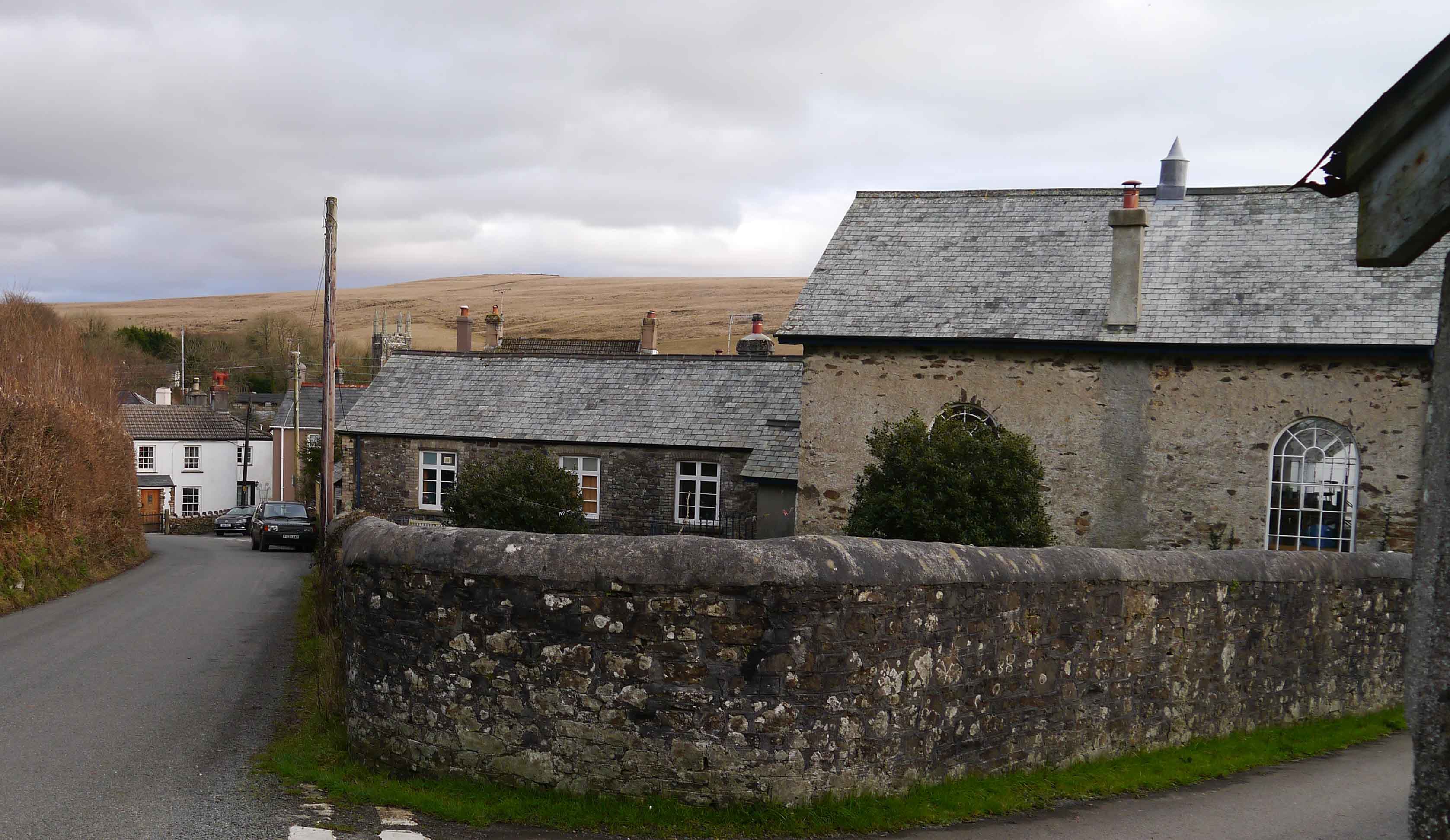
Old Methodist Chapel, Brentor, Devon
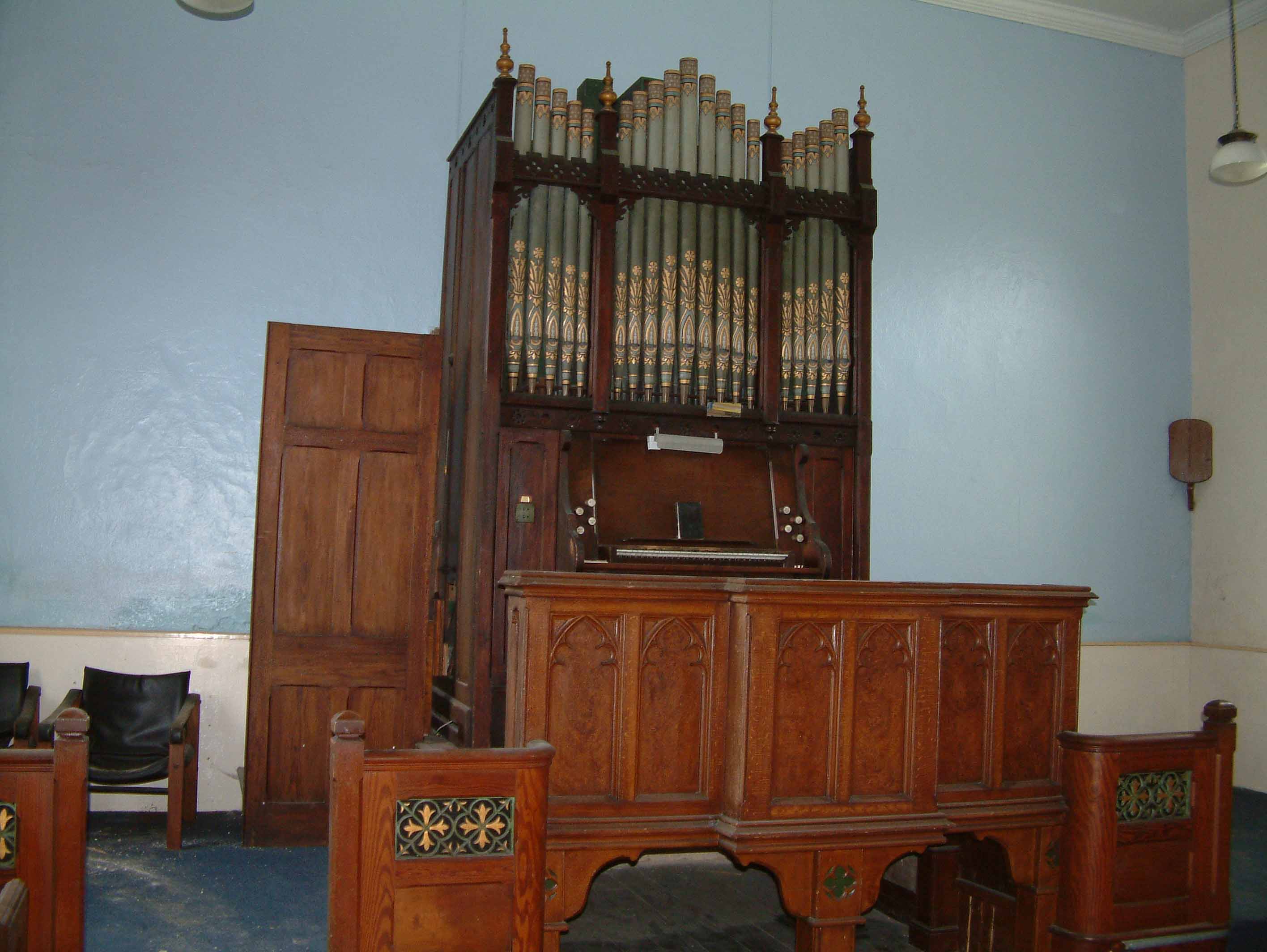
Methodist Chapel Organ, Brentor, Devon
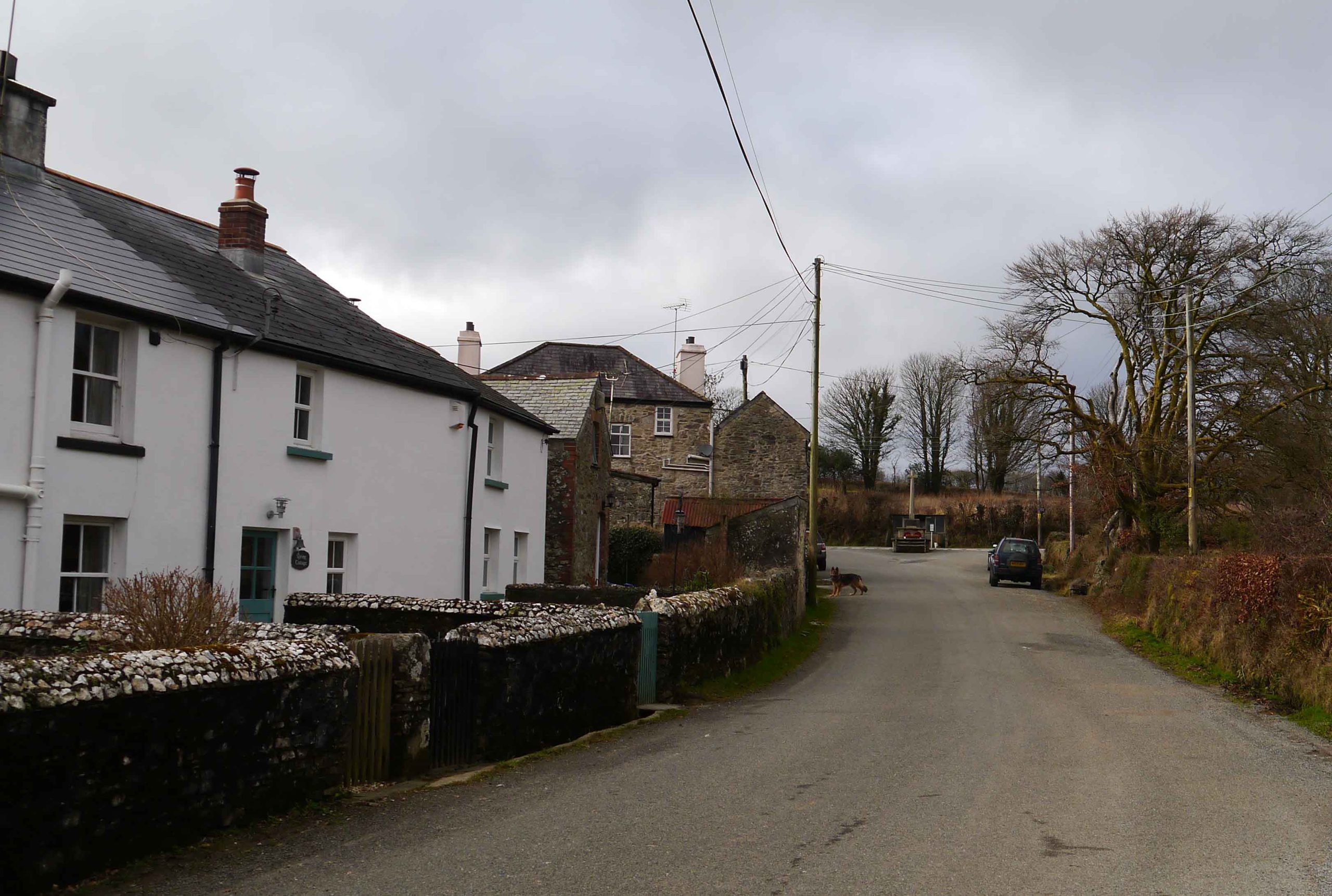
Miner's Cottages, Brentor, Devon
.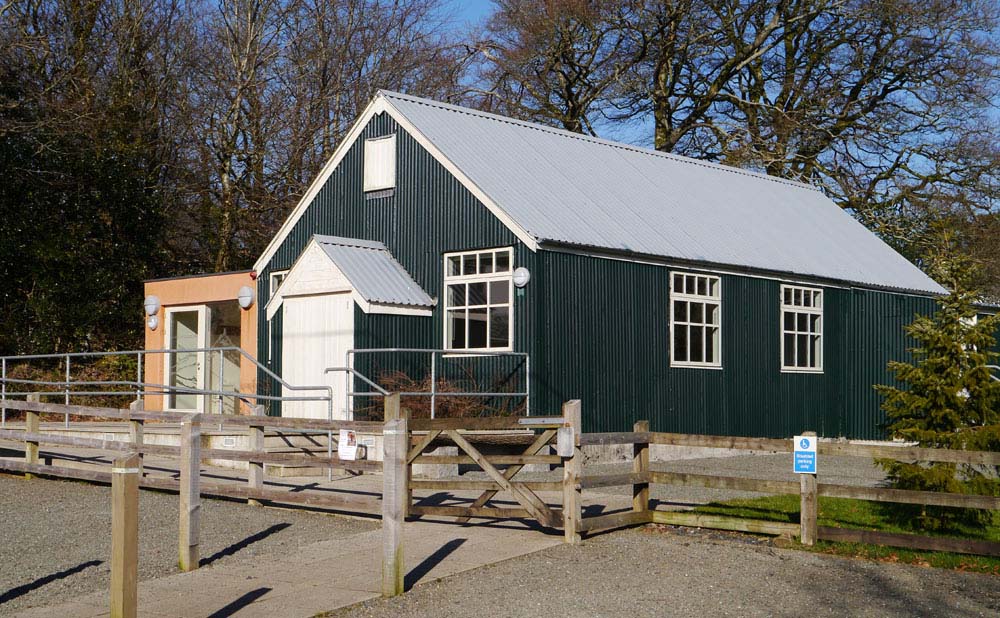
Brentor Village Hall, Brentor, Devon
Key to features in the Conservation Area
1. Christchurch (Grade II listed building)
Christchurch was built in 1856, and consecrated in 1857, to replace a small 'Chapel of Ease' which had been built in 1825 for the Church of St Peter in Lamerton some four miles away. The building of Christchurch was financed largely by donations from Mrs Isabella Howell, and it was designed in the 'eclectic gothic' style by Richard Gosling of Torquay.
2. School (Grade II listed building)
A National School was opened in 1832. This church school continued to serve the village until 1955 when it was closed and was converted into the Church Hall. The building was sold in 2004 and converted into a private dwelling.
The eastern parish boundary between Mary Tavy & Brentor ran along the River Burn and there was controversy over which parish should provide schooling for the children living on Blackdown. The Mary Tavy board eventually funded the building of West Blackdown School in 1890. It had difficulties from the start and the first school mistress Annie Gerry (1890 to 1901) received the lowest salary of any school in Devon. West Blackdown School closed in 1918.
3. Vicarage
The Vicarage was built in the late 19th Century and its grounds provide a continuation of the green space at the centre of the village.
4. Brentor Methodist Chapel (Grade II listed building)
The first 'Bible Christian' Chapel in Brentor was opened in 1827. It was replaced by a new Chapel built 1841. This became a Methodist Chapel in 1907 and was extended in the early 20th century. At this stage it supported a large 'Band of Hope'. The Chapel continued to provide a very active and well-supported focus for the community until the 1990s. The building was sold for conversion to a private dwelling in 2006. The associated cemetery further up the road was then adopted by the Parish Council as the parish burial ground.
5. Miners' cottages
This row of solidly built nineteenth century cottages has provided accommodation for several village shops through to the middle of the twentieth century, with a small bakery located at its southern end. The last village shop and post office was closed in the early 1980s.
6. Village Hall
The original Brentor Men's Reading Room was built on a piece of glebe land sold to Parish Council in 1901. The building was paid for by public subscription at a cost of £210, and was opened in 1912. In 1952 the Reading Room became the Village Hall, and remains the focus of most community activities in the village.
A Playing Field was donated to the Village by Frank & Mary Ward in the 1920s and was the site of an annual sports day until the 1980s. It is situated some way north from the village centre past Hammer Park.
7. War memorial
This small granite memorial, commissioned by the people of Brentor, was built in 1920 by the South Devon Granite Company, and dedicated in the same year.
The view from the war memorial site down to Christ Church has remained virtually unchanged over the past 150 years.
South Brentor
A loose collection of four farms and several cottages makes up the hamlet of South Brentor, which lies to the south east of Brent Tor. Brinsabatch is the only remaining working farm, and its residents still retain the right to be buried in the small graveyard at the church of St Michael De Rupe.
Liddaton
This small collection of farms and cottages deep in the Lyd Valley formed the only settlement in the original parish of Brentor. A 'Bible Christian' Chapel (Providence Chapel) was opened nearby at Broad Park, Coryton in 1868. It became a Methodist Chapel in 1907. It was closed in 1979 and was demolished to its foundations in the early twenty first century although the graveyard still remains.
Transport and Communications
Turnpike road
The turnpike road from Tavistock to Lydford (see map 1) was opened in 1762, with a Toll House at 'Riccard's House' (Brentor Inn). There were four gates where the pack horse track from Mary Tavy to Coryton crossed the turnpike road. The Tavistock Turnpike Trust was wound up in 1867, following the completion of the railway line from Tavistock to Launceston along the Burn Valley. (From information given in 'Tavistock's Yesterdays' vol 3, pages 17-36 by G. Woodcock)
Railways
South Devon Railway (linked to GWR)
The South Devon Railway built a goods siding but no station in Brentor on its Tavistock to Launceston line in 1865. This later became a GWR line with a station opened at Lydford Junction (also in Brentor Parish, E on Map 1.) in 1876. A joint SDR LSWR goods yard at Lydford was used until 1879. (From information given in ‘The Okehampton Line' by J Nicholas G Reeve, Irwell Press Ltd)
Brentor Station (LSWR)
A double track line opened for goods traffic on 12 May 1890 to the east of the GWR line and parallel to it. Brentor Station opened for passenger traffic on 2 June 1890. This was the busiest station on the LSWR line
between Tavistock & Okehampton..... The LSWR line was one of the main routes from Plymouth to London. The goods yard was closed on 4 April 1960 and the signal box on 10 June 1961. Both the line & station were closed on 6 May 1968 following the Beeching 'rationalisation' of the railway system. (From information given in ‘The Okehampton Line' by J Nicholas G Reeve, Irwell Press Ltd).

